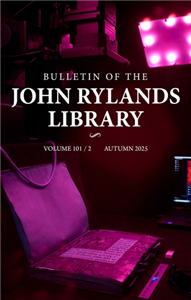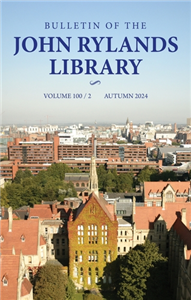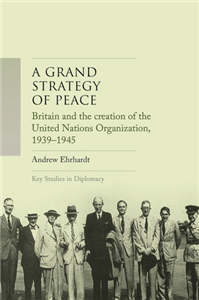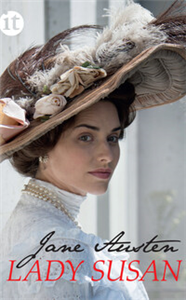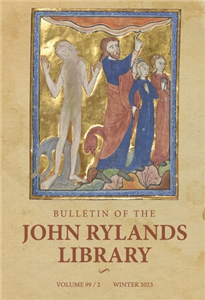Your Search Results
-
Promoted ContentMedieval historyJuly 2013
Noblewomen, aristocracy and power in the twelfth-century Anglo-Norman realm
by Susan M. Johns
-
Promoted ContentHumanities & Social SciencesJuly 2018
Noblewomen, aristocracy and power in the twelfth-century Anglo-Norman realm
by Susan M. Johns, Pamela Sharpe, Penny Summerfield, Lynn Abrams, Cordelia Beattie
-
 Trusted Partner
Humanities & Social SciencesMay 2016
Trusted Partner
Humanities & Social SciencesMay 2016Gender, nation and conquest in the high Middle Ages
by Susan M. Johns, Pamela Sharpe, Penny Summerfield, Lynn Abrams, Cordelia Beattie
-
 Trusted Partner
Humanities & Social SciencesMarch 2017
Trusted Partner
Humanities & Social SciencesMarch 2017The empire in one city?
Liverpool's inconvenient imperial past
by Sheryllynne Haggerty, Andrew Thompson, Anthony Webster, John M. MacKenzie, Nicholas J. White
From the late eighteenth century to the early twentieth century, Liverpool was frequently referred to as the 'second city of the empire'. Yet, the role of Liverpool within the British imperial system and the impact on the city of its colonial connections remain underplayed in recent writing on both Liverpool and the empire. However, 'inconvenient' this may prove, this specially-commissioned collection of essays demonstrates that the imperial dimension deserves more prevalence in both academic and popular representations of Liverpool's past. Indeed, if Liverpool does represent the 'World in One City' - the slogan for Liverpool's status as European Capital of Culture in 2008 - it could be argued that this is largely down to Merseyside's long-term interactions with the colonial world, and the legacies of that imperial history. In the context of Capital of Culture year and growing interest in the relationship between British provincial cities and the British empire, this book will find a wide audience amongst academics, students and history enthusiasts generally.
-
 Trusted Partner
Humanities & Social SciencesMay 2022
Trusted Partner
Humanities & Social SciencesMay 2022The pastor in print
by Amy G. Tan, Anthony Milton, Jason Peacey, Peter Lake, Alexandra Gajda, Alastair Bellany
-
 Trusted Partner
Humanities & Social SciencesDecember 2025
Trusted Partner
Humanities & Social SciencesDecember 2025Bulletin of the John Rylands Library 101/2
Imaging Heritage Science Initiatives at The John Rylands Research Institute and Library
by Stefan Hanß, James Robinson
The John Rylands Library houses one of the finest collections of rare books, manuscripts and archives in the world. The collections span five millennia, have a global reach and cover a wide range of subjects, including art and archaeology; economic, social, political, religious and military history; literature, drama and music; science and medicine; theology and philosophy; travel and exploration. For over a century, the Bulletin of the John Rylands Library has published research that complements the Library's special collections. An electronic edition of this issue is freely available under a Creative Commons (CC BY-NC-ND) licence.
-
 Trusted Partner
Humanities & Social SciencesDecember 2024
Trusted Partner
Humanities & Social SciencesDecember 2024Bulletin of the John Rylands Library 100/2
Higher Learning and Civic Cultures of Knowledge: Manchester 1824–2024
by Stuart Jones
The John Rylands Library houses one of the finest collections of rare books, manuscripts and archives in the world. The collections span five millennia, have a global reach and cover a wide range of subjects, including art and archaeology; economic, social, political, religious and military history; literature, drama and music; science and medicine; theology and philosophy; travel and exploration. For over a century, the Bulletin of the John Rylands Library has published research that complements the Library's special collections.
-
 Trusted Partner
Humanities & Social SciencesJune 2025
Trusted Partner
Humanities & Social SciencesJune 2025Bulletin of the John Rylands Library 101/1
by Fred Schurink, Rachel Winchcombe, Huw Twiston Davies
The John Rylands Library houses one of the finest collections of rare books, manuscripts and archives in the world. The collections span five millennia, have a global reach and cover a wide range of subjects, including art and archaeology; economic, social, political, religious and military history; literature, drama and music; science and medicine; theology and philosophy; travel and exploration. For over a century, the Bulletin of the John Rylands Library has published research that complements the Library's special collections. An electronic edition of this issue is freely available under a Creative Commons (CC BY-NC-ND) licence.
-
 Trusted Partner
Humanities & Social SciencesMarch 2017
Trusted Partner
Humanities & Social SciencesMarch 2017The Arctic in the British imagination 1818–1914
by Andrew Thompson, John M. MacKenzie, Rob David
The Arctic region has been the subject of much popular writing. This book considers nineteenth-century representations of the Arctic, and draws upon an extensive range of evidence that will allow the 'widest connections' to emerge from a 'cross-disciplinary analysis' using different methodologies and subject matter. It positions the Arctic alongside more thoroughly investigated theatres of Victorian enterprise. In the nineteenth century, most images were in the form of paintings, travel narratives, lectures given by the explorers themselves and photographs. The book explores key themes in Arctic images which impacted on subsequent representations through text, painting and photography. For much of the nineteenth century, national and regional geographical societies promoted exploration, and rewarded heroic endeavor. The book discusses images of the Arctic which originated in the activities of the geographical societies. The Times provided very low-key reporting of Arctic expeditions, as evidenced by its coverage of the missions of Sir John Franklin and James Clark Ross. However, the illustrated weekly became one of the main sources of popular representations of the Arctic. The book looks at the exhibitions of Arctic peoples, Arctic exploration and Arctic fauna in Britain. Late nineteenth-century exhibitions which featured the Arctic were essentially nostalgic in tone. The Golliwogg's Polar Adventures, published in 1900, drew on adult representations of the Arctic and will have confirmed and reinforced children's perceptions of the region. Text books, board games and novels helped to keep the subject alive among the young.
-
 Trusted Partner
Humanities & Social SciencesJuly 2025
Trusted Partner
Humanities & Social SciencesJuly 2025A grand strategy of peace
Britain and the creation of the United Nations Organization, 1939-1945
by Andrew Ehrhardt
A grand strategy of peace is the first detailed account of Britain's role in the creation of the United Nations Organization during the Second World War. As a work of traditional diplomatic history that brings in elements of intellectual history, the book describes how British officials, diplomats, politicians, and writers - previously seen to be secondary actors to the United States in this period - thought about, planned for, and helped to establish a future international order. While in the present day, many scholars and analysts have returned to the origins of the post- 1945 international system, this book offers an exhaustive account of how the statesmen and more importantly, the officials working below the statesmen, actually conceived of and worked to establish a post-war world order.
-
 Trusted Partner
December 2016
Trusted Partner
December 2016Lady Susan
Ein Roman in Briefen
by Jane Austen, Angelika Beck
Die attraktive Lady Susan sorgt für Aufregung in der Gesellschaft: Frisch verwitwet, weiß sie ihre Reize nur zu gut einzusetzen und kokettiert bereits wieder mit ihren Verehrern. Gerüchte über angebliche Affären machen die Runde. Um den Gerede zu entgehen zieht sie sich auf das Anwesen ihres Bruders zurück. Dort kann sie ihren Plan in Ruhe weiterverfolgen: einen neuen wohlhabenden Ehemann zu finden. Objekt ihrer Begierde ist der adrette Reginald DeCourcy, der jüngere Bruder ihrer Schwägerin. Es werden fleißig Intrigen gesponnen, um unliebsame Konkurrentinnen aus dem Feld zu schlagen. Doch als eines Tages ihre Tochter Frederica auftaucht, geraten Lady Susans Pläne in Gefahr. Hatte sie für die Tochter doch den reichen, recht einfältigen Sir James Martin auserwählt, was der allerdings überhaupt nicht passt … Lady Susan war Jane Austens erster Roman; er wurde erst posthum veröffentlicht. Nicht minder amüsant, doch viel scharfzüngiger als in ihren großen Romanen erzählt die beliebte Autorin von amourösen und gesellschaftlichen Verwicklungen.
-
 Trusted Partner
Literature & Literary StudiesApril 2021
Trusted Partner
Literature & Literary StudiesApril 2021John Derricke's The Image of Irelande: with a Discoverie of Woodkarne
by Thomas Herron, Denna Iammarino, Maryclaire Moroney, Joshua Samuel Reid
-
 Trusted Partner
Humanities & Social SciencesJuly 2018
Trusted Partner
Humanities & Social SciencesJuly 2018Order and conflict
Anthony Ascham and English political thought (1648–50)
by Peter Lake, Marco Barducci, Anthony Milton, Jason Peacey, Alexandra Gajda
This book provides a careful and systematic analysis of Anthony Ascham's career and writings for the first time in English. During the crucial period between the Second Civil War and the establishment of the English Republic, when he served as official pamphleteer of the Parliament and the republican government, Ascham put forward a complex argument in support of Parliament's claims for obedience which drew on the political thought of Grotius, Hobbes, Selden, Filmer and Machiavelli. He combined ideas taken from these authors and turned them into a powerful instrument of propaganda to be deployed in the service of the political agenda of his Independent patrons in Parliament. This investigation of Ascham's works brings together an intellectual analysis of his political thought and an exploration of the interaction between politics, propaganda and political ideas.
-
 Trusted Partner
June 1989
Trusted Partner
June 1989Lady Susan
Ein Roman in Briefen
by Jane Austen, Angelika Beck, Elizabeth Gilbert
Lady Susan, die Mutter einer im heiratsfähigen Alter befindlichen Tochter quartiert sich im Haus ihres Bruders ein und stiftet dort erhebliche Unruhe, als sie ihres Amüsements wegen dem Bruder ihrer Schwägerin den Kopf verdreht.
-
 Trusted Partner
March 2024
Trusted Partner
March 2024Lady Susan
by Jane Austen, Annabelle von Sperber, Angelika Beck
Die attraktive Lady Susan sorgt für Aufregung in der Gesellschaft: Frisch verwitwet, weiß sie ihre Reize einzusetzen und kokettiert mit ihren Verehrern. Gerüchte über angebliche Affären machen die Runde. Um dem Gerede zu entgehen, zieht sie sich auf das Anwesen ihres Bruders zurück, um in Ruhe ihren Plan weiterzuverfolgen: einen neuen wohlhabenden Ehemann zu finden. Objekt ihrer Begierde ist der adrette Reginald DeCourcy. Es werden fleißig Intrigen gesponnen, um unliebsame Konkurrentinnen aus dem Feld zu schlagen. Doch als eines Tages ihre Tochter Frederica auftaucht, geraten Lady Susans Pläne in Gefahr … Amüsant und scharfzüngig erzählt die beliebte Autorin von amourösen und gesellschaftlichen Verwicklungen.
-
 Trusted Partner
Literature & Literary StudiesDecember 2023
Trusted Partner
Literature & Literary StudiesDecember 2023Bulletin of the John Rylands Library 99/2
by Stephen Mossman, Cordelia Warr
The John Rylands Library houses one of the finest collections of rare books, manuscripts and archives in the world. The collections span five millennia and cover a wide range of subjects, including art and archaeology; economic, social, political, religious and military history; literature, drama and music; science and medicine; theology and philosophy; travel and exploration. For over a century, the Bulletin of the John Rylands Library has published research that complements the Library's special collections. The editors invite the submission of articles in these fields and welcome discussion of in-progress projects.
-
 Trusted Partner
Literature & Literary StudiesMay 2022
Trusted Partner
Literature & Literary StudiesMay 2022The correspondence of John Dryden
by Stephen Bernard, John McTague
-
 Trusted Partner
The ArtsJanuary 2019
Trusted Partner
The ArtsJanuary 2019Carol Reed
by Peter William Evans
Carol Reed is one of the truly outstanding directors of British cinema, and one whose work is long overdue for reconsideration. This major study ranges over Reed's entire career, combining observation of general trends and patterns with detailed analysis of twenty films, both acknowledged masterpieces and lesser-known works. Evans avoids a simplistic auteurist approach, placing the films in their autobiographical, socio-political and cultural contexts and relating these to the analysis of Reed's art. The critical approach combines psychoanalysis, gender theory, and the analysis of form. Archival research is also relied on to clarify Reed's relations with his creative team, financial backers and others. Films examined include Bank Holiday, A Girl Must Live, Odd Man Out, The Fallen Idol, The Third Man, Night Train to Munich, The Way Ahead, Outcast of the Islands, Trapeze and Oliver!.
-
 Trusted Partner
Humanities & Social SciencesFebruary 2017
Trusted Partner
Humanities & Social SciencesFebruary 2017Scottishness and Irishness in New Zealand since 1840
by Angela McCarthy, Andrew Thompson, John M. MacKenzie
This book examines the distinctive aspects that insiders and outsiders perceived as characteristic of Irish and Scottish ethnic identities in New Zealand. When, how, and why did Irish and Scots identify themselves and others in ethnic terms? What characteristics did the Irish and the Scots attribute to themselves and what traits did others assign to them? Did these traits change over time and if so how? Contemporary interest surrounding issues of ethnic identities is vibrant. In countries such as New Zealand, descendants of European settlers are seeking their ethnic origins, spurred on in part by factors such as an ongoing interest in indigenous genealogies, the burgeoning appeal of family history societies, and the booming financial benefits of marketing ethnicities abroad. This fascinating book will appeal to scholars and students of the history of empire and the construction of identity in settler communities, as well as those interested in the history of New Zealand.
-
 Trusted Partner
Trusted Partner









